Facebook and Instagram fuel marketing strategies across industries—but which one stretches your budget further? Here’s what you need to know.


*This article has been updated to include the newest social media marketing studies relevant for 2023*
In an ideal world, brands would have unlimited resources to invest in every social media platform out there. But the reality is that most businesses have to make careful decisions about where to focus their resources. And when it comes to choosing the right social media platform for your brand, Instagram and Facebook are two of the top contenders.
Both of these Meta-owned platforms offer a variety of tools and special features that can help you get the most out of your social media strategy. But which one deserves more of your time, money, and effort in exchange for the best ROI on engagement? We answered this question using some of the top social media marketing studies to reach our conclusion—here’s what we found.
What’s the difference between Instagram vs Facebook?
Although both social media platforms are owned by Meta, each has its own distinctive features and user experiences.
Facebook prioritizes personal connections first, with features like groups and event pages to bring people together. Planning your ten year high school reunion? Make a Facebook event page to spread the word. Hoping to get more signatures on a petition to make your community a better place? Create a Facebook group and start rallying the troops. In other words, it’s not really the place you go when you’re wondering what your favorite brands have been up to.
On the other hand, Instagram is a hyper-visual content platform where trends are born through striking imagery, snappy captions, and catchy reels. It’s less about promoting discourse (although the comments section is known to buzz on occasion) and more about crafting a consistent and authentic aesthetic. It’s where users go to connect with a larger world that includes brands—and, as of 2020, even products in the popular “shop” tab.
What does Instagram offer that Facebook doesn’t?
One of Instagram’s most significant advantages over Facebook is its ability to create and curate visually engaging brand content. The best part? People are more likely to interact with that branded content just because it’s on Instagram instead of Facebook.
*This article has been updated to include the newest social media marketing studies relevant for 2023*
In an ideal world, brands would have unlimited resources to invest in every social media platform out there. But the reality is that most businesses have to make careful decisions about where to focus their resources. And when it comes to choosing the right social media platform for your brand, Instagram and Facebook are two of the top contenders.
Both of these Meta-owned platforms offer a variety of tools and special features that can help you get the most out of your social media strategy. But which one deserves more of your time, money, and effort in exchange for the best ROI on engagement? We answered this question using some of the top social media marketing studies to reach our conclusion—here’s what we found.
What’s the difference between Instagram vs Facebook?
Although both social media platforms are owned by Meta, each has its own distinctive features and user experiences.
Facebook prioritizes personal connections first, with features like groups and event pages to bring people together. Planning your ten year high school reunion? Make a Facebook event page to spread the word. Hoping to get more signatures on a petition to make your community a better place? Create a Facebook group and start rallying the troops. In other words, it’s not really the place you go when you’re wondering what your favorite brands have been up to.
On the other hand, Instagram is a hyper-visual content platform where trends are born through striking imagery, snappy captions, and catchy reels. It’s less about promoting discourse (although the comments section is known to buzz on occasion) and more about crafting a consistent and authentic aesthetic. It’s where users go to connect with a larger world that includes brands—and, as of 2020, even products in the popular “shop” tab.
What does Instagram offer that Facebook doesn’t?
One of Instagram’s most significant advantages over Facebook is its ability to create and curate visually engaging brand content. The best part? People are more likely to interact with that branded content just because it’s on Instagram instead of Facebook.
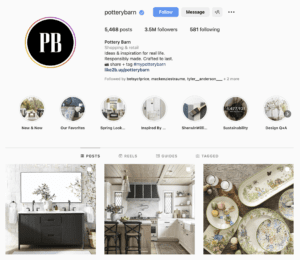

One 2021 study by Databox found that 62.4% of people are more likely to interact with a brand on Instagram than any other social media channel. 85% of those users also said they follow at least 6 brands on Instagram, so if you’re lucky enough to be one of them, then you’ve got yourself a solid opportunity to spark engagement.
Instagram also gives brands the opportunity to connect with a younger demographic (ages 18-44), who may be more likely to interact with images and videos than they are text-based posts.
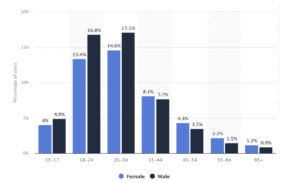

So which one offers a better ROI on engagement for brands: Instagram or Facebook?
Instagram’s reach is superior.
Facebook’s growth has leveled off over the last five years, with fewer millennials engaging with Facebook than ever. Compounded with Social Ogilvy’s prediction of Facebook Zero—where a brand’s organic reach is predicted to hit zero in the near future—Instagram presents reach opportunities that brands can’t afford to ignore.
Instagram dominates engagement.
Instagram’s photo-centric content brings with it an impressive level of consumer engagement that’s steadily on the rise. On the other hand, Facebook engagement has been on the decline since 2018, meaning brands hoping to invest in highly engaging content would be wise to lean into Instagram’s highly visual platform.
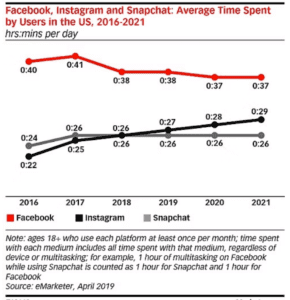

Young adults are more active on Instagram.
According to Pew Research data from 2021, around seven in ten Americans ages 18 to 29 (71%) say they ever use Instagram.
This compares with smaller shares of older age groups:
- 48% of those ages 30 to 49 engage with IG
- 29% of those 50 to 64 engage with IG
- 13% of those 65 and older engage with IG
3 brands to watch for Instagram engagement
Although many brands are winning without putting money behind their content, Instagram offers brands the opportunity to find and engage relevant users with paid ads and sponsored posts. No doubt, most brands lean into a blend of organic and paid content to build their engagement.
Wondering what it looks like when you find the sweet spot with your IG audience? Here are a few brands you should follow right now that are absolutely nailing it.
NASA – 87.9 million followers


NASA’s 87.9 million followers can’t get enough when it comes to out-of-this-world images and videos. NASA has aced the art of creating captivating educational posts, evidenced by the millions of likes and comments they elicit with posts like “Putting a face to the name 🌝.”
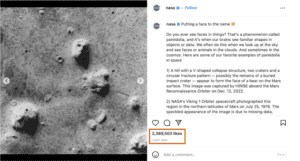

In this example of masterful engagement, NASA posted images designed to play psychological games with users via a phenomenon called pareidolia (where your brain automatically searches for familiar patterns, such as faces, in inanimate objects). Users couldn’t help but “like” and join in the comments to share what imagery their brains discerned from these galactic pareidolia examples.
Admittedly, NASA isn’t trying to sell users anything—but that’s the point. Educational content builds interest and relationships, giving users a reason to include your brand in the handful of brands they might choose to invite into their feed. Even brands that are trying to move users to action for profit can learn a thing or two from NASA when it comes to crafting highly engaging top-of-funnel IG content.
Victoria’s Secret – 74 million followers
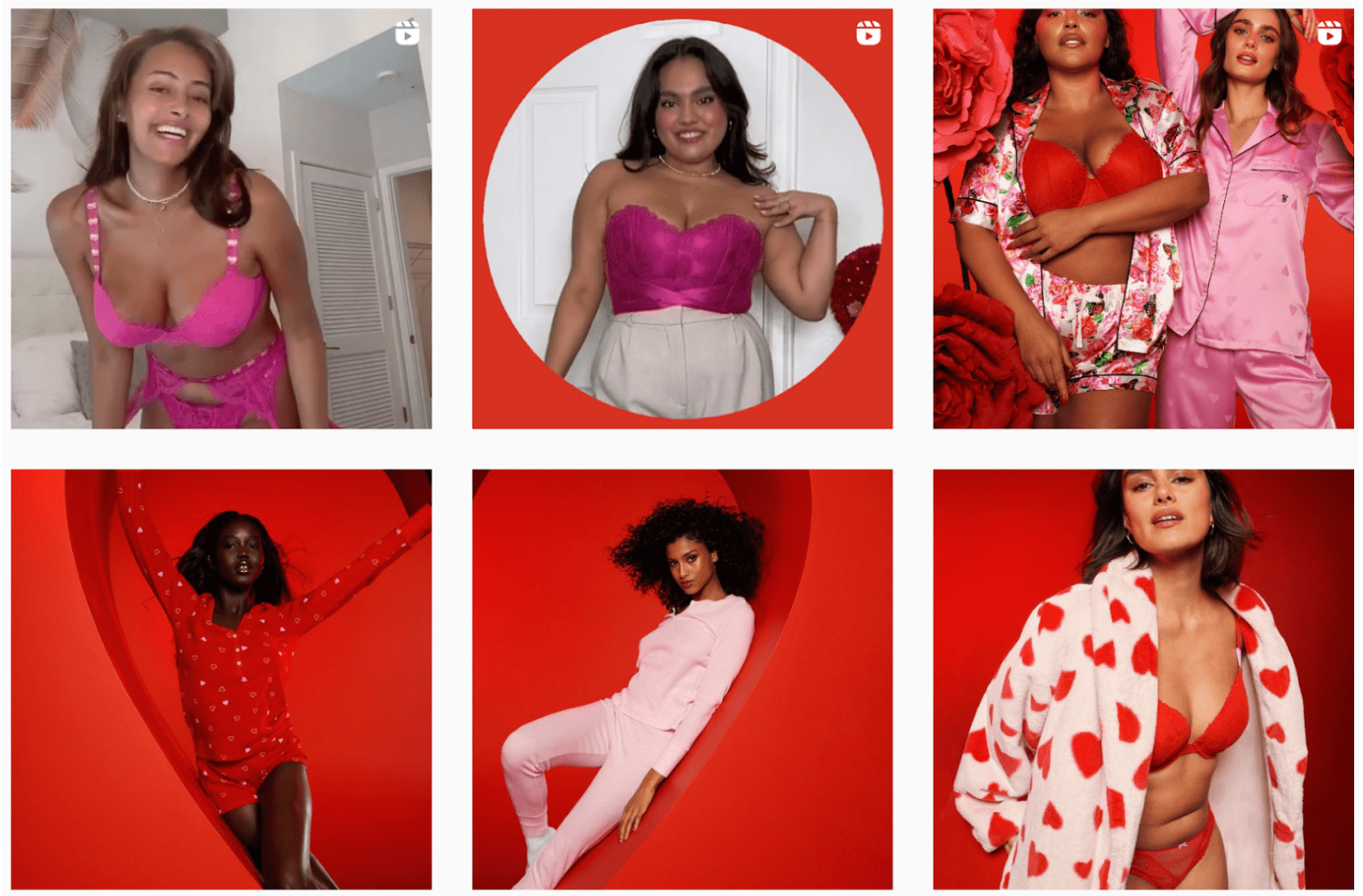

Victoria’s Secret has undergone a rather drastic brand transformation since the days of its now-divisive Angels. After a more inclusive rebrand in 2021, Victoria’s Secret came back with a bevy of supermodels called the VS Collective—ten accomplished women representing various ethnicities, ages, and body sizes.
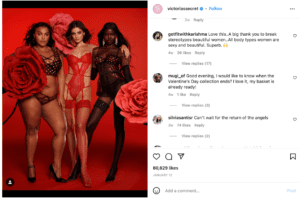

A January 2023 post featuring this new take on inclusive beauty standards elicited over 80,000 likes—that’s 20K more likes than the next most popular post (a shot of Bella Hadid in the lingerie retailer’s new 2023 Valentine’s Day merch).
The comments section is hot with supporters touting the new approach to beauty as “superb,” while others lamented about the angels of the past. Honestly, spurring a range of opinions is something your content should aspire for, as it invites more engagement, thus teaching the algorithm your content is worthy of an organic boost.
Shopify – 1.1 million followers
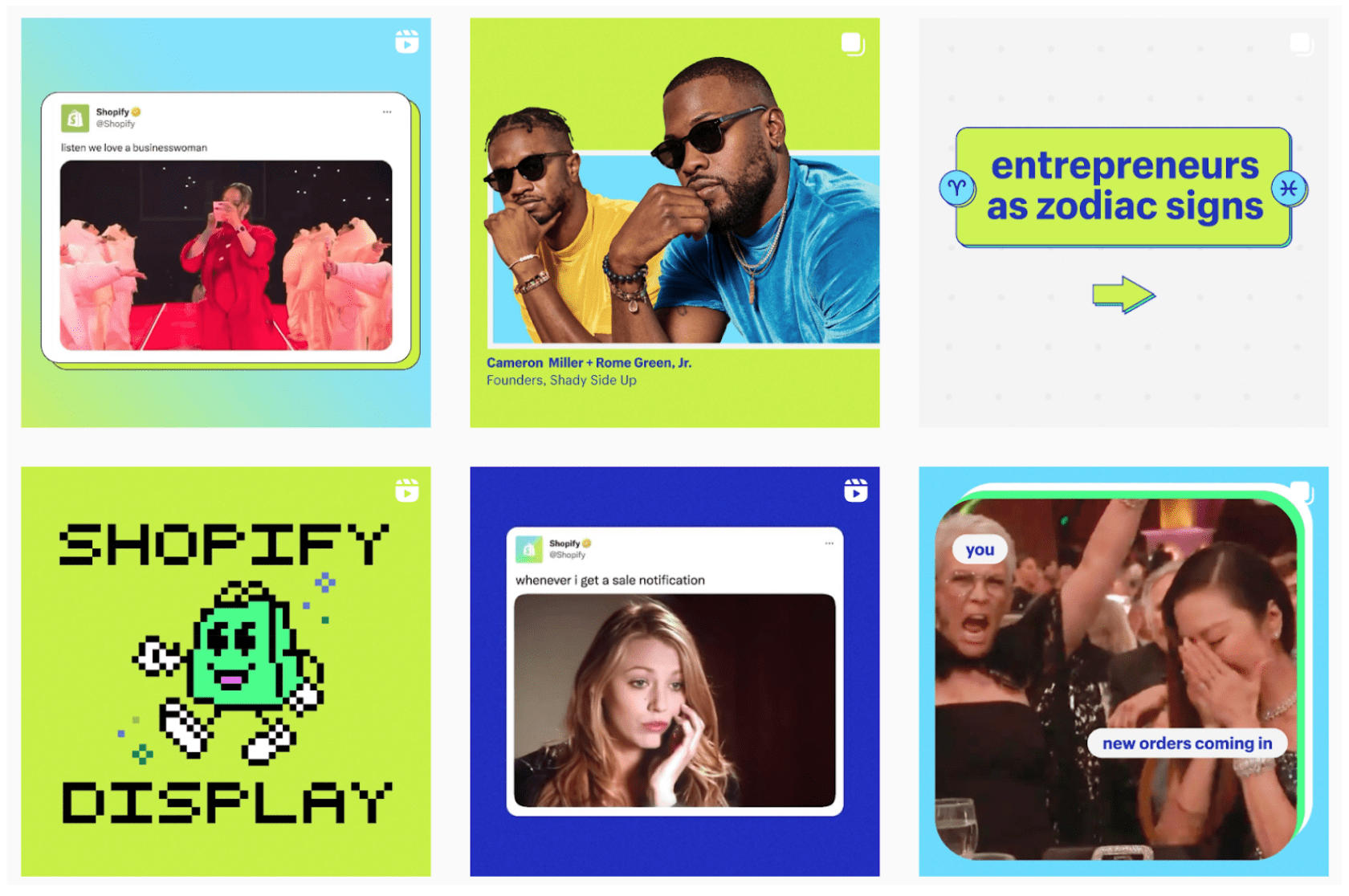

Like the rest of us, professionals often spend free time scrolling IG, meaning there’s major opportunity for B2B brands to target their audience (even if it is after hours). With more than 1.1 million followers as of 2023, Shopify is an excellent example of how B2Bs can thrive on the platform right alongside B2C brands.
In January 2023, Shopify managed to rack up nearly 2K likes (a feat for any B2B brand) and double their comments section with a Zodiac-themed post captioned simply, “which one are you.”
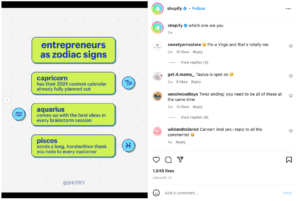

A successful B2B like Shopify posting about Zodiac signs and cultivating a palette of either fun or obnoxious neon colors (depending on your preferred aesthetic) may seem like a curious choice—until you consider that the largest segment of Shopify users are female millennial entrepreneurs ages 25-32.
Suddenly, the entire aesthetic and messaging seems genius.
They might be all grown up now, but this Y2K-nostalgia-loving segment won’t soon forget the days of silver eyeshadow and Tamagotchis—and a whopping 35% of them follow their weekly horoscope.
There’s a simple lesson here that transcends the gaps between social strategy for B2B or B2C: know thy audience. Tailor your content to your followers the same way you tailor messaging for your products and services, and see engagement soar.
What does all this mean for your brand?
Be consistent
One of the best ways to drive engagement on Instagram is to consistently post quality content that engages your followers. Be sure to post a healthy mix of educational, entertaining, and brand-defining content to keep users on your follow list and get the best engagement results.
Be authentic
There’s an old saying in the industry: “If you try to appeal to everyone, you won’t appeal to anyone.” Compelling branded posts should fit organically into a user’s feed, as though it was tailored for them. Whether it’s Y2K-loving entrepreneurs or lifelong learners captivated by the mystery of space, know your audience and stay authentic to your brand.
Post high-performing content types
Making your mark on Instagram is easiest when you post the most popular forms of content. So while single-image content dominated Instagram feeds in 2021, 2023 is all about reels and carousels.
One 2022 study suggests that reels get between two to twelve times more reach compared to static feed posts. After reels, the next leading content type is carousels.
Carousels often deep dive into the benefits of services or products, outperforming single-image and video posts in terms of interactions and reach. The 2022 study also revealed carousels achieved 25.71% more reach than single-image posts.
Hey helps drive the connection between brands and people.
While Instagram isn’t the silver bullet in connecting with an increasingly distracted audience, it’s got huge potential for your brand Want some free thinking on this? Let us know by starting a conversation.

Comments are closed.